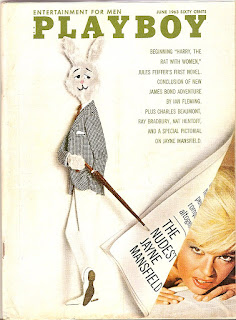He was born Colin Lionel Emm, in Gosport, Hampshire, England, on November 20, 1932. It would not be a normal childhood however, as Europe was gearing up for the second World War. Dawson and his family were often on the move, and he spent very little time in school.
By 14, he'd had enough, and he left home to join the British Merchant Navy. He was assigned to the RMS Mauretania, which took him to The Bahamas, Havana, and New York City. While in the service, he took up boxing, earning nearly $5,000 in shipboard matches.
Following his discharge from the service, Colin set his sights on a career in comedy. To that end, he changed his name to Dickie Dawson for a few years, before ultimately settling on Richard.
 |
| Hogan's Heroes cast photo. |
Dawson wouldn't become a household name until 1965 however, when he was cast as Corporal Peter Newkirk in the Bob Crane sit-com Hogan's Heroes. How that show ever got made is still a mystery to me. Oh those zany Nazis! The show lasted for six seasons and continues to air in syndication to this day. (How has it not been targeted yet?)
During the show's final year, Dawson was pulling double duty as a cast member on Laugh-In, which he stayed with until the series ended in 1973. Here's a clip of Dawson discussing that experience.
That same year, Dawson found new life as a game show personality when he joined the cast of the Mark Goodson series Match Game '73 (later '74, '75, etc.). He proved quite popular in the part, both for his wit and in his ability to come up with the correct response. He was a fan favorite who was often chosen by the contestants to participate with them in the Super Match bonus round. Here's a clip of some of his funnier moments.
 |
| Match Game '73. |
By 1976, Dawson was interested in hosting a show of his own. In response, Mark Goodson created a Match Game spin-off series dubbed Family Feud. The series was an overnight success and would become the project for which Dawson is most fondly remembered for. For the first two years of the show's run, he continued serving as a panelist on Match Game, before finally retiring from that series in 1978.
The Feud was canceled in 1985, but would return a few years later with new host Ray Combs. Dawson returned to his acting roots with a surprise starring role in the 1987 Arnold Schwarzenegger film The Running Man. Here's a clip of him chewing up the scenery.
 |
| "I'll be back." "Only in a rerun." |
Dawson was a well-known smoker. In fact it was often part of his act. He didn't quit until he was 61, but by that point the damage had been done. He died of esophageal cancer on June 2, 2012 - 16 years to the day after Ray Combs committed suicide.
He was buried at Pierce Brothers Westwood Village. His closest celebrity neighbor is Jim Backus, the subject of a previous post here at Six Feet Under Hollywood. His Hogan's Heroes co-star Bob Crane is just a short walk away.
 |
| Inscription: Forever in our hearts. Beloved husband, father & grandfather. |
Trivia
- Dawson was a man of many talents, but singing wasn't one of them. Still he tried, releasing a psychedelic 45 in 1967. It included the songs "His Children's Parade" and "Apples and Oranges." Give each one a listen. Just don't blame me.
- Most folks aren't lucky enough to have that magical moment caught on tape - the moment when they meet the love of their life. Dawson was that fortunate however, meeting his future bride Gretchen Johnson when she appeared on the Feud. Check out the episode in its entirety here. She certainly was ready for action!
- Dawson was well known for kissing the female contestants who appeared on the Feud, a practice that no doubt would have him banned from television today. The habit earned him the nickname "The Kissing Bandit," so ABC executives asked him to stop. He didn't give in however, explaining that as a child, his mother had always kissed him for good luck, and he was expressing the same sentiment to the ladies on the show. He ultimately left it up to the viewers, who voted overwhelmingly to keep the kissing as part of the show.
- Dawson occasionally served as a guest host for Johnny Carson on The Tonight Show. During a taping in 1979, actress and guest Della Reese suffered a near-fatal aneurysm while being interviewed by Dawson, and production was canceled. Reese survived the health scare.





























